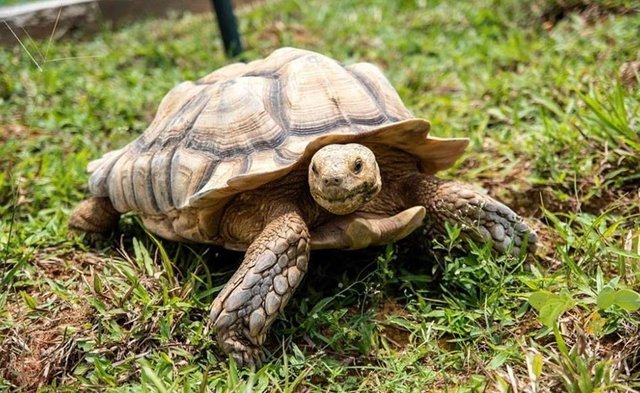
A predator may not need the fastest speed or reflexes to catch a bird.
On August 23, in a paper published in Current Biology ("Contemporary Biology"), a journal of Cell Press, researchers reported the first evidence that a tortoise was killing: biting a swallow The head of a gull chick, kill and eat it. Although this is the first time this behavior has been captured with a camera, researchers believe that this may not be the only "crime" case of a tortoise "killer".
"I can't believe what I saw." said Justin Gerlach, the corresponding author of the paper and the head of the Department of Biological Studies at Peter College, University of Cambridge, UK. "This is both scary and surprising."
This video was shot in the woods of Manga Island in the Seychelles, an archipelago on the East African coast of the Indian Ocean. An adult female tortoise walks straight towards the target at a normal walking speed: a tern chick trapped on a log. "The tortoise looked directly at the tern and walked towards it. This is very strange and completely different from the normal behavior of the tortoise." Gerlach said.
Slowly and steadily, the tortoise approached quietly. When it gets close enough, it stretches out its neck and opens its mouth. The nestling tried to protect itself by pecking the tortoise, but its efforts were in vain. Once the chick has moved to the end of the log and has nowhere to go, the tortoise bites its head directly.
The nestling fell off the log. The tortoise also climbed down and swallowed it whole. The whole process takes 7 minutes.
Although people often associate the slow speed of turtles with herbivorous habits, this is not the first time people have discovered turtles eating meat in the wild. Gerlach said: "But before that, it was difficult to tell whether the tortoise killed the animal directly, or happened to encounter an animal that was already dead."
This video, taken by Anna Zora, deputy director of conservation and sustainable development on the island, provides the first clear evidence of a deliberate and planned attack by a tortoise. First, when the tortoise approaches the chicks, the mouth is open and the tongue is retracted. Gerlach said this is the typical aggressive behavior of tortoises, indicating that the tern is the target to be killed.
In addition, this tortoise seems to have experience catching chicks on wood. Tern are birds that build nests in trees. When the chicks fall, their instinct is to avoid the ground at all costs: this may be why the chicks still stay on the log even if the tortoise climbs closer.
Gerlach said: "In my opinion, this tortoise has successfully hunted before, and it seems to know what it is doing."
Although this turtle appears to be an experienced hunter, the question remains: how many turtles will hunt, how often do they hunt, how much nutrition they get from it, and whether this happens elsewhere. "Did we see that a tortoise population is developing a new behavior with evolutionary significance, or is it just an interesting event of the moment?" Gerlach said.
Researchers suspect that the protection work on Gunkanjima may be part of the reason for this unusual behavior.
Although the numbers of seabirds and tortoises have been declining in the past few hundred years, conservation efforts have restored their numbers, creating a very unique combination of high numbers of birds and tortoises. Gerlach said: "We created the conditions for the emergence of a natural behavior that had not been seen for hundreds of years."
It's also possible that tortoises don't just like birds. "There are many stories about turtles eating snail shells to get calcium to form their own bones, but I don't understand why they don't eat all snails," Gerlach said.
Despite these unknowns, Gerlach believes that one thing is certain: "It is clear that they like to eat terns. Although it is a little troublesome compared to eating plants."